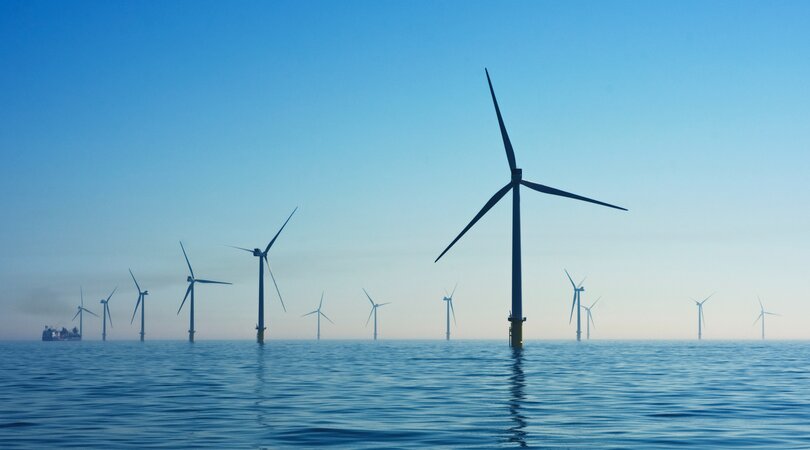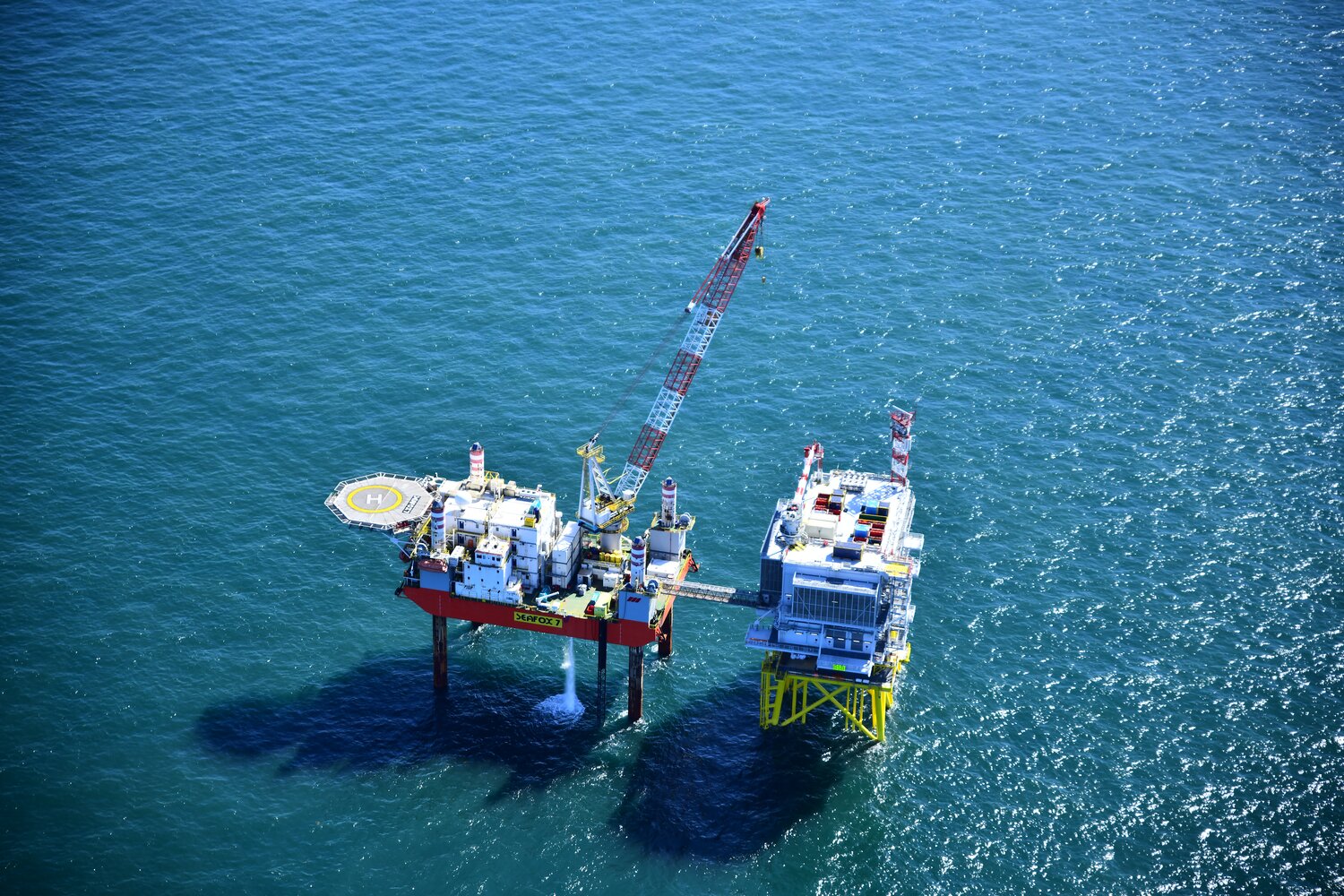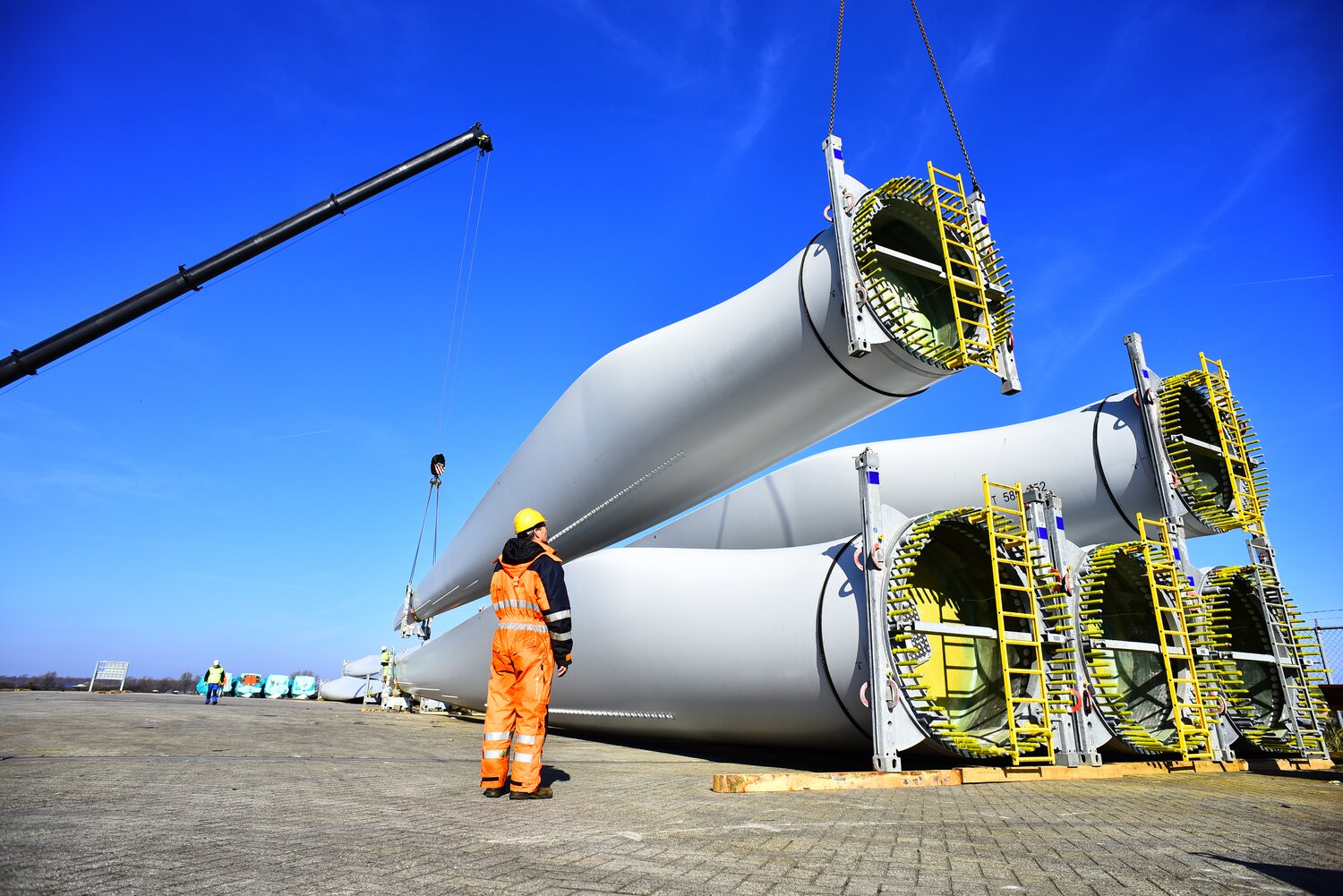Our new NorthStandard site is now live. There will be no new content or updates added to this site. For the latest information, please visit our new site north-standard.com.
不断变化的世界助推海上风能发展
国际社会和世界各国不断推进脱碳计划并将风能作为诸多战略的关键,推动可再生能源发展已成为当务之急。

经济多元化、新冠疫情封锁、俄乌冲突后希望减少对进口天然气的依赖,这些因素正将我们加速推向可再生能源。
海上风电场能源是能源结构中增长迅速的部分。但挑战也随之而来。海运行业准备好应对这些不断变化的需求了吗?支持转型所需的资源和基础设施是否具备?未来行业将如何布局?
在 Standard Club Alongside 播客中,两位业内专家讨论了各自公司参与支持海上风能项目开发的情况。
价格是否合理?
Stuart Keeble 是一名特许土木工程师,也是全球领先的疏浚承包商和海上能源市场海上服务提供商 Boskalis 的商务经理。他介绍了近年来可再生能源协调保障工作的巨大变化。
Keeble 表示:“通货膨胀的大环境刺激价格一路上涨,导致价格和程序大幅调整”。
他补充说,最初前往俄罗斯和其他国家的船舶不得不被转向其他工程并用作他用。
Menck 是一家总部位于德国的专业打桩技术公司,服务于全球油气、风电和土木工程项目。Menck 的常务董事 Fabian Hippe 也遇到了类似的问题。
乌克兰是铁矿石等重要物资的最大生产国之一,这给关键工具的生产带来了不确定性。原钢是 Menck 产品的主要原料,而这场冲突导致价格猛涨。
Boskalis 和 Menk 的业务涉及海上安装的不同方面,并且经常合作。一家公司提供协调保障支持,另一家公司提供将风车桩打入地下的设备。
这两位专家告诉 Alongside,生产阶段的成本也越来越高。通货膨胀增加了产出时间,给供应商带来了压力。
Keeble 表示:“如果是生产一台桩锤,12 个月出头是顺利的情况。我们现在通常需要 18 到 24 个月。”
投资者希望在经费支出后得到设备并快速获得回报,因此催生了这些问题。海运业服务提供商和零部件提供商目前的首要关切是在这些互相矛盾的压力间取得平衡。
风能的变化
在供应问题和价格飙升的情况下,全球正在拥抱海上能源的根本性转变。
Keeble 介绍:“在英国,我们在过去 15 年或者近 20 年的时间里开发的风能资源极其丰富。
欧洲在这方面是全球的佼佼者,其他市场正在跟进效仿。由于中国的投资,可再生能源技术的价格面临下行压力。同样,日本和美国在海上资产方面也取得了重大进展。
Keeble 认为,虽然这对投资机会来说是好事,但从协调保障方面来说却是一个巨大的难题。
鉴于后疫情时期的大环境和欧洲的战争,如何安排船舶支持世界各地的风电场项目并为几年后进行的安装做好准备是一个重大挑战。
Keeble 介绍:“在理想情况下,你可能会认为,一队船应该只停在一个区域,服务于那里的风电场建设。但现实并非如此。”
规模上的变化是另一个带来挑战的因素。风电场是超大型的项目,对可持续能源的需求不断增长,规模也越来越大。
Keeble 表示,不仅固定式风力项目是这种情况。随着行业内不断创新,浮式风电场将很快“取代”传统风电场。所谓浮式风电场,使用的是一套全新的操作流程,从而将设备拖到深海之中。
就 Menck 的安排来看,2024 年的风电场安装项目已经全部排满。2025 年和其后一年也已经排进了项目,新设备的交付周期约为两年。
目前,Menk 和 Boskaalis 正在合作美国的 Block Island 扩建项目。2015 年,那里安装了五台涡轮机;而现在,要建设三个风电场。这反映出世界各地正在大力推动风能发展。
Hippe 解释道:“我们正在台湾推进项目;正在欧洲建设迄今为止世界上最大的风电场,这是一个大规模的开发,由三个不同的风电场构成,每个风电场将安装 95 根单桩和地基。”
全球触角和相互连结
目前,南半球对可再生能源的兴趣浓厚。几乎任何有海岸线和 风力发电潜能的地方都在研究风能。发展中国家正面临着脱碳和提高能源自主生产力的压力。
Hippe 表示:“与北半球相比,南半球在这方面非常不成熟,但这为全球供应链再次带来了多样的需求和活力。”
发展中国家最初并不打算安装大型风电场,但在发展过程中其他的必要需求刺激了对关键产品的需求,如 Boskalis 提供的船舶或 Menck 提供的打桩设备。
Hippe 解释说,在全球范围内开展工作时面临的一个问题是,不同国家的区域供应链目前无法完全满足本地支持的需要。
Hippe 表示:“对于欧洲承包商来说,仅为一个风电场项目远航到美国,然后再回国,这并不可持续。这不利于项目高效推进。”
在安装方面,不同公司之间的相互联系与其国际触角同样重要。
工程零部件提供商和协调保障提供商是相互合作的模式。Keeble 认为,一艘将风电场零部件从海岸运到海上的船舶“实际上就像一辆出租车”,但没有安装建筑所需的桩锤。
因此相互依存的关系非常重要。了解一家公司的业务对另一家公司会有何必然影响,对实现国际可再生能源目标至关重要。
“企业可以快速扩大规模,尽可能抓住更多的增长机会。但如果不能交付,就有可能会引发失败的多米诺骨牌效应。”
供应链挑战
美国和欧洲建设风电场的主要区别在于,北美在油气资产方面具有历史优势,但这对建设海上项目所需的基础设施来说是不利因素。Hippe 解释道,因为开发风能所需要的特殊技术、平台和船舶数量远远达不到要求。
因此,美国的项目需要部分依赖欧洲承包商跨越大西洋来安装风电场,对我们来说是令人振奋的机遇。
“我们正在进军油气基础设施极为匮乏的地区,以便进行资源和港口设施开发。”Hippe 表示,“这包括美国东海岸等人口密集地区。对于人口密集的地方,开发风能要优于远距离电力输送。”
在人力层面上来说,随着海上风电场的不断发展,可能早就应该进行劳力资源改革了。风电场项目通常需要数月才能完工,而且项目布局在全球各个角落。这意味着很多工作者需要远离家乡,在海上工作几周来为项目提供支持。
Hippe 表示:“实际上,我们可以应用不同的模式。给予员工灵活性有利于帮助我们实现设定的发展目标。”
尽管面临诸多挑战,包括钢铁、电缆生产和船舶可用性等问题,Keeble 仍然乐观地认为,全球大多数在建项目都能够完成。在规划时需要考虑立法和监管框架等因素可能也是一个问题,但他相信,这可以通过进一步加强国际合作有效解决。
“风电场的建设实际上早在安装前就悄然开始了。”Keeble 解释说,“现在,风电场从构想到建成很可能需要十年甚至更久。此中涉及到的工程、规划、法律融资等工作量巨大。而英国在这些方面非常有优势。”
全球合作不仅可以为参与安装项目的各方设定整体目标,还有利于促进技术的国际转移。对于风能发展处于萌芽阶段的国家,大家可以到欧洲、美国和英国学习必要的工程专业知识,然后把这些知识带回国家。世界局部地区的进步会为其他地方带来机遇,就像来自远方的强风可以让涡轮机转动。
新出版的 16 页 Standard Club 《海上和可再生能源合同指南》 现已发布。
A price worth paying?
Stuart Keeble, a chartered civil engineer and the commercial manager at Boskalis, a leading global dredging contractor and marine services provider to the offshore energy market, outlined how renewable logistics has seen dramatic changes in recent years.
"The inflationary environment has also been driving prices up, leading to extensive price and process adjustments", Keeble said.
He added that vessels initially heading for Russia and other countries have had to be diverted to alternate works and purposes.
Fabian Hippe, Managing Director of Menck, a German-based specialist in pile-driving technology and services for oil and gas, wind and civil engineering projects worldwide, is experiencing similar issues.
Ukraine is one of the largest producers of essential materials, such as iron ore, which has been problematic for producing crucial tools. Raw steel is a primary element of Menck products, and the conflict has led to a price hike.
Both Boskalis and Menck are involved in different aspects of the offshore installation process and often work together. One company provides the logistical support, while the other supplies equipment driving windmills into the ground.
The two experts told Alongside that the production phase is becoming expensive too. Inflation has seen output time increase and put pressure on suppliers.
"While we are talking about production of a hammer, an excess of 12 months is easy. We're now looking rather at 18 to 24 months," Keeble said.
All of these problems are occurring amid a push from investors seeking equipment and prompt returns on their expenditures. Balancing these countervailing pressures is now a primary concern for service providers and component suppliers in the maritime industry.

Winds of change
Amid supply issues and skyrocketing prices, a radical shift towards offshore energy sources is happening around the world.
"Here in the UK, we have an enormous wind resource that's been developed over the last 15, nearly 20 years," Keeble said.
Other markets are now following suit, with Europe as a global leader with downward pressure on renewable technology prices due to Chinese investments. Likewise, Japan and the US are making significant progress in offshore assets.
While this bodes well for investment opportunities, logistically, it presents a huge puzzle, according to Keeble.
Sailing vessels to support wind farm projects worldwide, and making preparations for installations set to take place years in the future, is a significant challenge considering post-pandemic circumstances and a European war.
“In a perfect world, you might argue that one group of vessels should just stay in one region and build those wind farms. But the reality is, it doesn’t work like that,” Keeble said.
Changes in scale are also a factor. Wind farms are gigantic projects, and as the demand for sustainable energy grows, size follows suit.
This isn't just the case for fixed wind projects either. As innovation within the industry advances, floating wind farms, which require a whole new operation involving towing them into the deep ocean, will soon "eclipse" traditional windfarms, Keeble said.
As far as Menck's schedule is concerned, it is now fully booked in 2024 for wind farm installation projects. It is also taking projects into 2025 and the following year with a lead time for building new equipment of around two years.
One project Menck and Boskaalis are working on is the expansion of Block Island in the US. In 2015, five turbines were installed, and now three whole wind farms are to be constructed. This is indicative of the kind of activity taking place the world over.
"We're working in Taiwan; we're working in Europe, on the world's largest wind farm to this day, which is a very massive development consisting of three different farms with 95 monopiles and foundations to be installed per farm," Hippe explained.

Global reach and interconnectivity
A significant interest in renewables is now coming from the global south. Almost anywhere which has a coastline and available wind yield, is a candidate for wind energy. Developing countries are facing pressure to decarbonise and generate more sovereign energy sources.
"The Southern Hemisphere this time is very much immature compared to the north, but that again drives a different demand and different dynamics into the global supply chain," Hippe said.
Developing countries are not initially looking to install the largest wind farms, but other imperatives for expansion spur on demand for critical products like vessels, which Boskalis provides, or pile installation equipment, as Menck offers.
A problem that arises when working on such a global scale, Hippe explained, is that regional supply chains for different countries are currently inadequate for sufficient local support.
"It's not sustainable for European contractors to always sail to the US just to do one farm and then sail back home. It's rather counterproductive," Hippe said.
The interconnected nature of different firms is as important as their international reach when it comes to installation.
Both engineering component suppliers and logistics work in cooperation with each other. According to Keeble, a vessel that takes wind farm components from shore to sea is "really just a taxi" without the hammer needed to install the structure.
This is why mutually dependent relationships are essential. Understanding how the responsibility of one firm necessarily impacts the other will be central to meeting international renewable targets.
"Companies can rush to scale up and try to seize as much of that growth as possible. But if you fail to deliver, you end up with this kind of domino effect of potential failure," added Keeble.

Supply chain challenges
A major distinction between US and European capacity is that North America's historic lead in oil and gas assets has had a countervailing impact on the infrastructure necessary for offshore projects. The bespoke technology, platforms and vessels are simply not there in sufficient quantity, Hippe explained.
This puts US projects in the exciting position of partly relying on European contractors making transatlantic voyages to install wind farms.
"We're now going into areas that have hardly any oil and gas infrastructure available in order to tap into resources, port facilities as well," Hippe said. "This includes areas where the majority of the population lives, like the East Coast of the US. It's always favourable to develop wind where people live rather than transport electricity over a long distance."
At the human-level, offshore wind farm expansion may be overdue for a revamp in its labour organisation. Wind farm projects can take many months to complete, and more of them taking place worldwide means more workers staying at sea to support projects for weeks away from home.
"We can actually accommodate different models on that. Giving flexibility to the employees would give us a headway in terms of the ambition that has been set for developments," Hippe said.
Despite the challenges, including further concerns over steel, cable production and vessel availability, Keeble remains optimistic that most projects in the pipeline globally can be completed. Planning around legislative and regulatory frameworks can also be a hurdle, but he believes this could be effectively addressed through further cooperation and international cohesiveness.
"Constructing a wind farm actually starts way before installation," Keeble explained. "The development of a wind farm now can take easily a decade or more from conception to completion. That really involves a huge amount of engineering, planning, legal financing. And these are strengths, which the UK, in particular, has in spades."
Global cooperation doesn't just offer a holistic aim for every party involved in installation projects but also facilitates international transfers of skills. Those living in countries developing wind energy in its embryonic stages can travel to Europe, the US and the UK to learn essential engineering expertise and transport them home. Advancements in one part of the world offers opportunities elsewhere, like a strong wind from afar can move many turbines.
The newly published 16-page Standard Club Offshore & Renewables Contracting Guide is now available.

